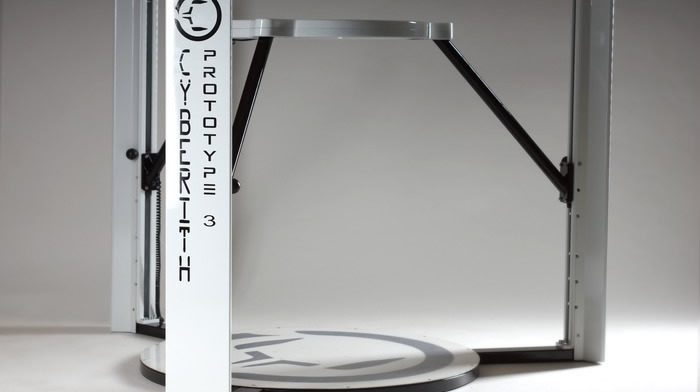Cyberith, fresh from their extremely successful Kickstarter campaign, are clearly not resting on their laurels. They’ve announced that with their newest addition to their VR locomotion device the Virtualiser, they can offer compatibility with the new generation of mobile VR headsets such as Samsung’s Gear VR.
Untethered, Decoupled VR Locomotion
Wires, they suck! If there’s a VR enthusiast out there who doesn’t harbour a deep hatred for the immersion sapping power of a tangled cable, I’ve yet to meet them. It’s one of the most powerful promises the advent of mobile VR brings, freedom from the regime of cabling.
With this in mind, Cyberith have released information and a short video demonstrating their latest feature, wireless untethered connectivity. The idea being that owners of a mobile VR headset, such as the Samsung Note 4 powered Gear VR, can pair their phone with the Virtualiser and wander, wires-free through virtual worlds with the treadmill streaming motion control information to the headset.
See Also: Cyberith Virtualiser Makes US Debut at SVVR
The video also demonstrates one of the innate benefits of using an omnidirectional treadmill for movement input. Walking in one direction whilst looking in another is something we all take for granted but an element traditional games stubbornly eschew, mainly due to fundamental limitations of traditional controllers. Games such as ARMA have provided the ability to de-couple where you look with the direction that you walk. Treadmills like the Cyberith Virtualiser coupled with the naturalistic ability to look where you want wearing the wireless headset of your choice is a combination that has the potential to be incredibly immersive.
Cyberith recently celebrated the successful conclusion of their Virtualiser Kickstarter campaign, which raised over $360k of their original $350k target. Early backers of the Kickstarter are expecting to receive their treadmills around March 2015.







